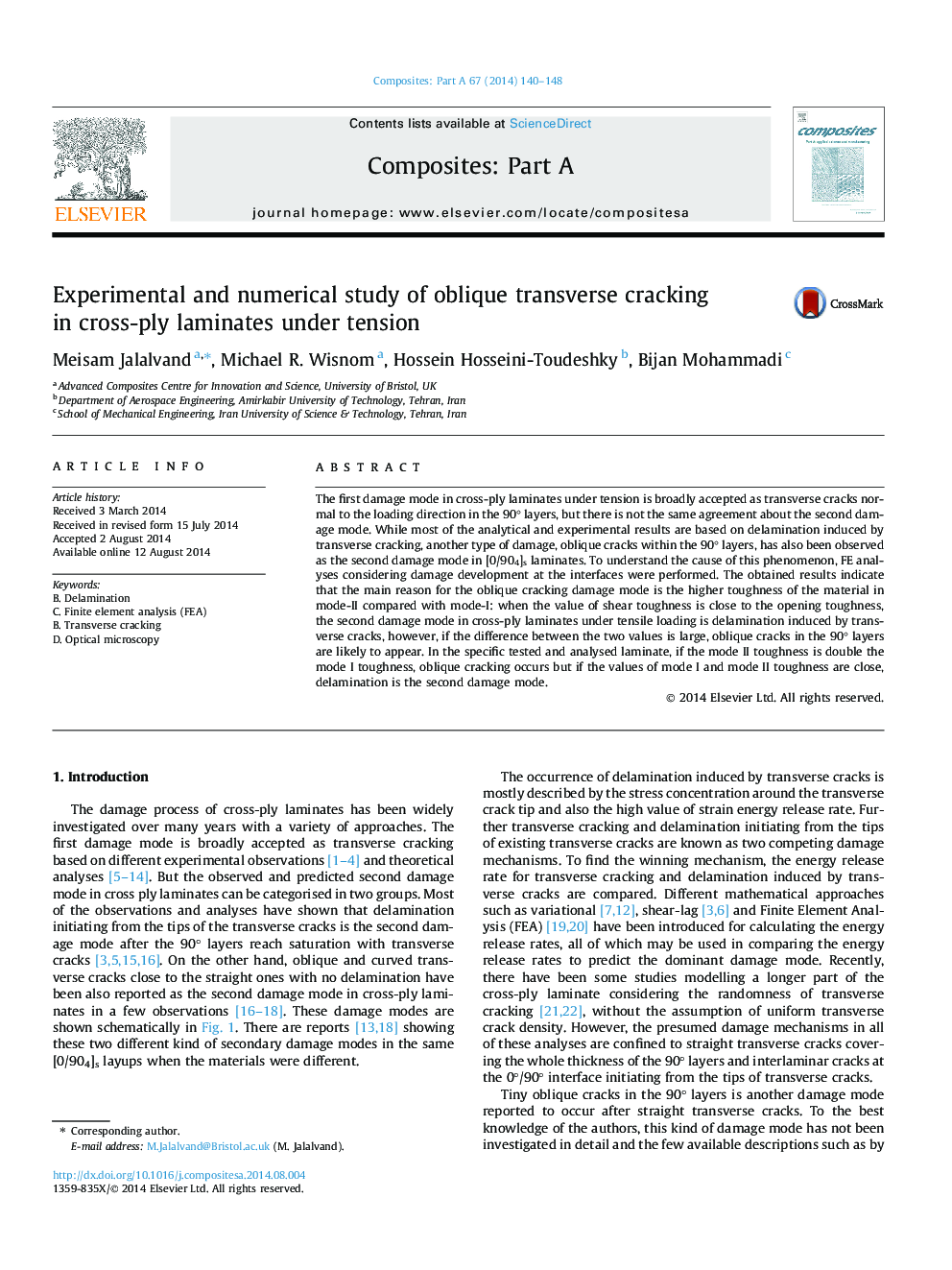| Article ID | Journal | Published Year | Pages | File Type |
|---|---|---|---|---|
| 1466020 | Composites Part A: Applied Science and Manufacturing | 2014 | 9 Pages |
The first damage mode in cross-ply laminates under tension is broadly accepted as transverse cracks normal to the loading direction in the 90° layers, but there is not the same agreement about the second damage mode. While most of the analytical and experimental results are based on delamination induced by transverse cracking, another type of damage, oblique cracks within the 90° layers, has also been observed as the second damage mode in [0/904]s laminates. To understand the cause of this phenomenon, FE analyses considering damage development at the interfaces were performed. The obtained results indicate that the main reason for the oblique cracking damage mode is the higher toughness of the material in mode-II compared with mode-I: when the value of shear toughness is close to the opening toughness, the second damage mode in cross-ply laminates under tensile loading is delamination induced by transverse cracks, however, if the difference between the two values is large, oblique cracks in the 90° layers are likely to appear. In the specific tested and analysed laminate, if the mode II toughness is double the mode I toughness, oblique cracking occurs but if the values of mode I and mode II toughness are close, delamination is the second damage mode.
